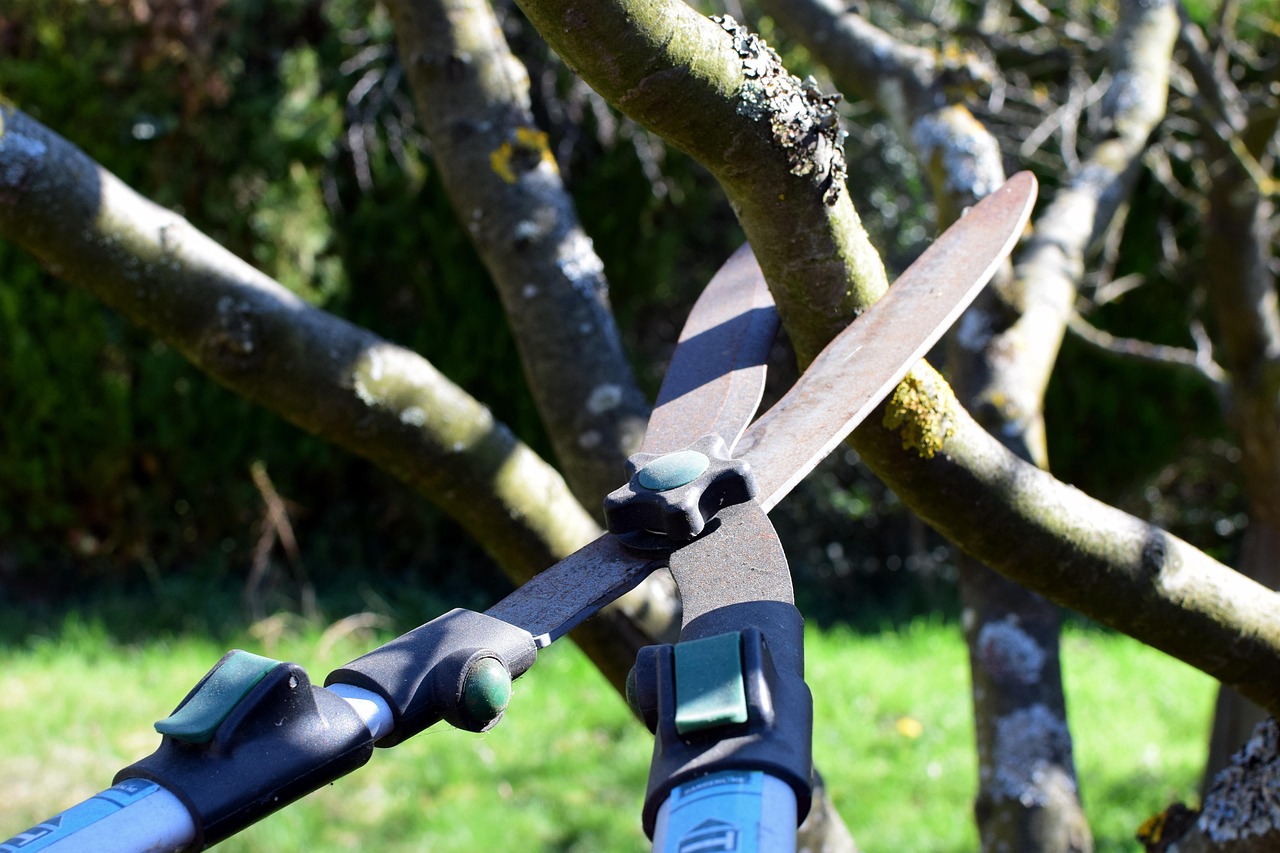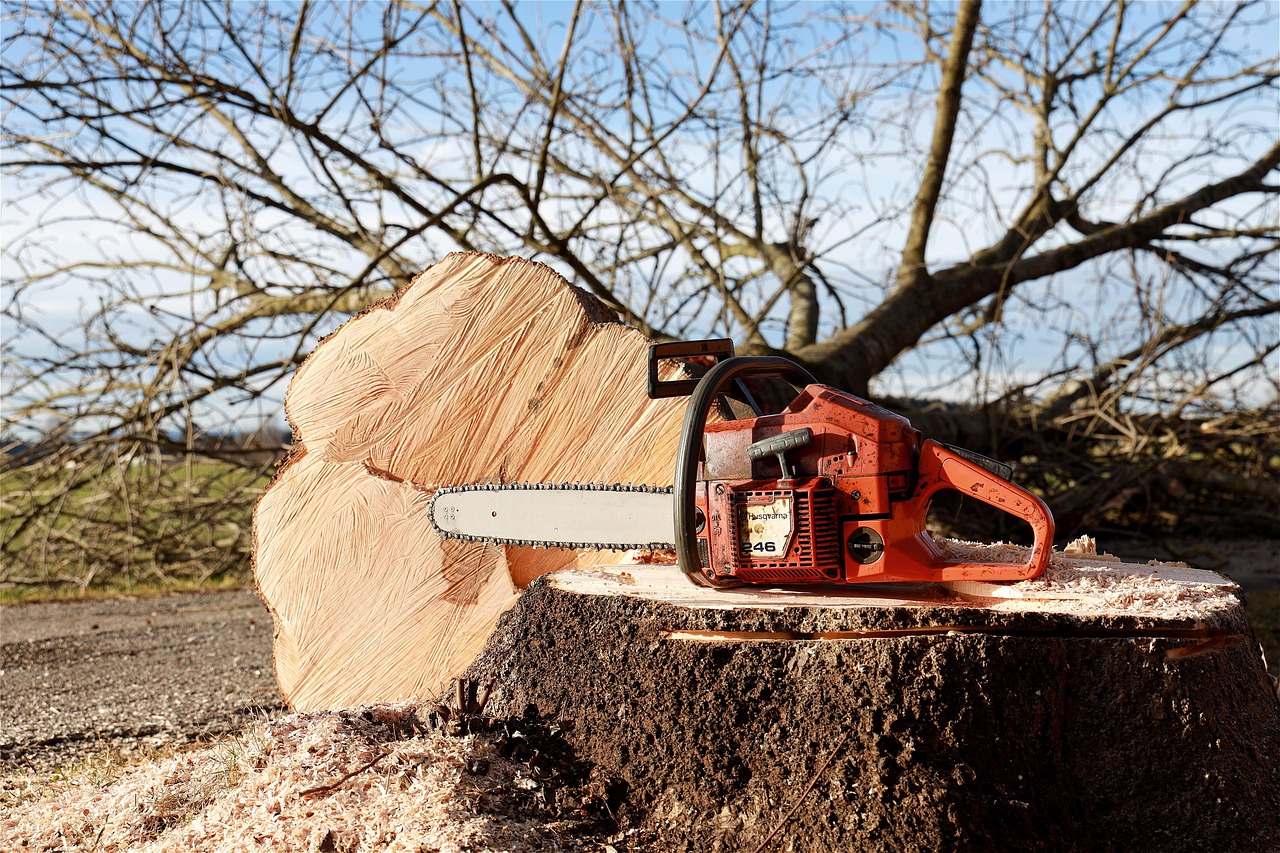XGBoost utilizes tree pruning techniques to improve model performance and prevent overfitting. By selectively removing branches in decision trees, it enhances accuracy while reducing complexity. This process optimizes the learning algorithm, allowing for efficient handling of large datasets in machine learning tasks.
Understanding XGBoost and Its Importance
XGBoost, or Extreme Gradient Boosting, is a popular machine learning algorithm that has gained significant attention due to its efficiency and performance. It is particularly favored for supervised learning tasks, such as classification and regression. The algorithm is built on the principles of boosting, which combines multiple weak learners to create a strong predictive model.

The boosting process works by adding new models to correct errors made by existing ones. XGBoost enhances this technique by incorporating regularization methods and parallel processing capabilities, making it faster and more accurate than traditional boosting algorithms. One of the key features that contribute to its success is its ability to handle overfitting through various techniques, including tree pruning.
What is Tree Pruning?
Tree pruning is a critical technique used in decision tree algorithms to improve model generalization. In the context of XGBoost, pruning involves removing parts of the tree that do not provide significant power in predicting the target variable. This process helps in simplifying the model and improving its predictive performance.
There are two main types of pruning techniques: pre-pruning and post-pruning. Pre-pruning occurs while the tree is being constructed, stopping the split when it no longer improves the model. Post-pruning takes place after the full tree has been created, where branches are removed based on their contribution to the overall accuracy.

How Does XGBoost Implement Tree Pruning?
XGBoost implements a unique approach to tree pruning that sets it apart from other algorithms. It utilizes a method called “max depth” and a regularization term to control the complexity of the trees. The algorithm aims to ensure that only the most important splits are retained while pruning away those that do not significantly contribute to the prediction accuracy.
The following table outlines various pruning techniques utilized in XGBoost:
| Pruning Technique | Description | Benefits |
|---|---|---|
| Pre-Pruning | Stops tree growth early based on criteria like max depth or minimum child weight. | Reduces computation time; prevents overfitting during training. |
| Post-Pruning | Removes branches from a fully grown tree based on statistical tests. | Simplifies model; enhances interpretability and reduces overfitting. |
| Cost-Complexity Pruning | Balances tree size with its accuracy by introducing a penalty for complexity. | Optimizes performance; encourages simpler models. |
The Role of Regularization in Pruning
Regularization plays a crucial role in XGBoost’s pruning process. By adding regularization terms to the loss function, XGBoost discourages overly complex trees. The two main types of regularization used are L1 (Lasso) and L2 (Ridge) regularization. These techniques help in penalizing large coefficients, effectively pruning unnecessary branches from the decision trees.

L1 regularization encourages sparsity, which means it can set some feature weights to zero. This action can lead to the elimination of irrelevant features from the model. On the other hand, L2 regularization helps in maintaining small weights for less important features, ensuring that they do not dominate the model’s predictions.
Benefits of Tree Pruning in XGBoost
The advantages of implementing tree pruning techniques in XGBoost are significant. Some key benefits include:
- Improved Model Generalization: By removing unnecessary branches, pruning aids in preventing overfitting, allowing models to perform better on unseen data.
- Reduced Complexity: Simplifying the model leads to faster predictions and easier interpretation of results.
- Enhanced Computational Efficiency: With fewer branches to evaluate, the computational resources required for training and inference are minimized.
- Better Handling of Noise: Pruning helps in filtering out noise from the training data, leading to more robust predictions.
Through these benefits, XGBoost’s tree pruning techniques enable practitioners to build highly efficient models capable of tackling complex machine learning challenges effectively.

Types of Pruning Techniques in XGBoost
In XGBoost, several pruning techniques can be employed to enhance model performance. Understanding these techniques is essential for selecting the appropriate method based on the specific problem at hand. The following sections delve into different pruning methods used in XGBoost.
1. Pre-Pruning Techniques
Pre-pruning, also known as early stopping, involves halting the growth of decision trees during their construction. This process prevents the trees from becoming overly complex and helps maintain generalization. The key parameters for pre-pruning in XGBoost include:
- Max Depth: This parameter limits the maximum depth of a tree. Setting a lower value can prevent the model from learning overly specific patterns that may not generalize well.
- Min Child Weight: This parameter specifies the minimum sum of instance weight (hessian) needed in a child node. If the criterion is not met, no further splitting occurs.
- Gamma: This parameter acts as a regularization term. It determines the minimum loss reduction required to make a further partition on a leaf node. A higher gamma value results in fewer splits.
The combination of these parameters allows users to control tree complexity effectively, ensuring that the model remains robust against overfitting.
2. Post-Pruning Techniques
Post-pruning occurs after the tree has been fully grown. In this phase, branches that do not contribute significantly to the predictive power of the model are removed. The primary post-pruning technique used in XGBoost is known as cost-complexity pruning. This involves evaluating the trade-off between the complexity of the tree and its performance on validation data.
The cost-complexity pruning method utilizes a parameter known as alpha (α). This parameter represents the penalty for adding additional leaf nodes. The following steps outline the process:
- Create a fully-grown tree using standard training procedures.
- Evaluate each terminal node’s contribution to the overall accuracy using cross-validation.
- Remove nodes with minimal contribution while maintaining a balance between tree size and accuracy.
- Repeat the evaluation until the optimal tree structure is achieved.
3. Regularization Techniques in Pruning
Regularization is a crucial aspect of pruning in XGBoost. By adding penalties to the loss function, regularization helps limit model complexity, which directly influences pruning effectiveness. The two primary types of regularization are:
- L1 Regularization (Lasso): Encourages sparsity in the model by forcing some feature weights to zero. This action can lead to the elimination of irrelevant features from consideration in pruning.
- L2 Regularization (Ridge): Works by keeping weights small, which reduces the impact of less important features without eliminating them entirely. This approach provides smoother solutions and enhances model stability.
The combination of these regularization techniques with pruning strategies results in a more robust and efficient model capable of handling various datasets effectively.
Hyperparameter Tuning for Effective Pruning
Hyperparameter tuning is essential for optimizing tree pruning techniques in XGBoost. Properly adjusted hyperparameters can significantly improve model performance and ensure successful pruning. The following hyperparameters are critical to focus on:
- Learning Rate: Also known as eta, this parameter controls how much to update the weights at each step. A smaller learning rate can lead to better performance but requires more trees.
- N_estimators: This parameter defines the number of boosting rounds or trees to be built. Increasing this value can improve accuracy, but it may also lead to overfitting if not balanced with pruning techniques.
- Subsample: This parameter indicates the fraction of samples used for fitting individual base learners. A lower value can prevent overfitting by introducing randomness into the model training.
Tuning these hyperparameters through methods like grid search or random search can help identify the optimal settings for effective pruning and overall model performance.
Evaluating Pruned Trees
Once pruning techniques have been applied, it is crucial to evaluate the performance of the pruned trees. Common evaluation metrics include:
- AUC-ROC: For classification tasks, this metric assesses the model’s ability to distinguish between classes.
- Mean Squared Error (MSE): For regression tasks, MSE measures the average squared difference between predicted and actual values.
- Cross-Validation Scores: Utilizing k-fold cross-validation helps gauge how well the model generalizes to unseen data.
By applying these evaluation metrics, practitioners can ascertain whether their pruning techniques have successfully improved model performance without sacrificing accuracy.
Best Practices for Implementing Tree Pruning in XGBoost
When applying tree pruning techniques in XGBoost, following best practices ensures optimal performance and efficiency. These practices guide users in leveraging the algorithm’s capabilities while minimizing potential pitfalls associated with overfitting and model complexity.
1. Start with Exploratory Data Analysis (EDA)
Before diving into model training and pruning, conducting thorough exploratory data analysis is essential. EDA helps identify the characteristics of the data, including:
- Feature Distribution: Understanding how features are distributed can inform decisions about which features may require regularization or pruning.
- Outliers: Identifying and addressing outliers can significantly impact model performance and the effectiveness of tree pruning.
- Correlations: Analyzing correlations among features can guide feature selection and highlight potential multicollinearity issues.
By performing EDA, practitioners can make informed decisions about data preprocessing and the subsequent pruning techniques to apply to their models.
2. Use Cross-Validation for Hyperparameter Tuning
Cross-validation is a powerful technique for assessing model performance and tuning hyperparameters. It involves partitioning the dataset into subsets, training the model on some subsets while validating it on others. This method helps ensure that hyperparameters are optimized based on the model’s ability to generalize.
Consider implementing k-fold cross-validation, where the dataset is split into k parts. The model is trained k times, each time using a different fold for validation. This approach provides a robust estimate of model performance and helps identify the best hyperparameters for effective pruning.
3. Monitor Learning Curves
Learning curves are graphical representations that show how a model’s performance changes as the size of the training dataset increases. Monitoring these curves during training can provide insights into whether the model is overfitting or underfitting.
A typical learning curve consists of two plots:
- Training Score: Reflects the model’s performance on the training data.
- Validation Score: Reflects the model’s performance on unseen validation data.
If there is a significant gap between the training score and the validation score, it may indicate overfitting. In such cases, implementing stronger pruning strategies or increasing regularization parameters can help improve generalization.
4. Evaluate Feature Importance
XGBoost provides built-in methods to evaluate feature importance. Understanding which features contribute most to predictions can guide feature selection and pruning decisions. Key methods for assessing feature importance include:
- Gain: Measures the contribution brought by a feature to the model’s accuracy.
- Cover: Represents the relative quantity of observations concerned by a feature.
- Frequency: Indicates how often a feature is used in all trees of the model.
By evaluating feature importance, practitioners can prune less significant features, leading to simpler models that still maintain accuracy.
Common Challenges in Tree Pruning
While tree pruning offers numerous benefits, practitioners may encounter challenges during implementation. Being aware of these potential issues can help mitigate their impact on model performance.
1. Overfitting Despite Pruning
Even with effective pruning techniques, models may still exhibit signs of overfitting. This situation may arise due to:
- The complexity of the underlying data structure.
- Insufficient data for training, leading to reliance on noise rather than true signal.
- Poor choice of hyperparameters that fail to adequately control model complexity.
It is crucial to continuously monitor model performance using validation metrics and adjust pruning strategies accordingly.
2. Computational Resources
Tree pruning methods can be computationally intensive, especially when dealing with large datasets or complex models. The following strategies can help manage computational resource requirements:
- Feature Selection: Reducing the number of features before training can decrease computation time.
- Early Stopping: Implementing early stopping criteria during training can help prevent unnecessary computations when improvements plateau.
- Distributed Computing: Leveraging distributed computing frameworks such as Apache Spark can allow for parallel processing and speed up training times.
3. Interpretability of Models
The complexity of pruned models can sometimes hinder interpretability. While simpler models are generally easier to understand, overly aggressive pruning may lead to loss of important information. To enhance interpretability:
- Use SHAP Values: SHAP (SHapley Additive exPlanations) values can provide insights into how each feature contributes to predictions, making models more interpretable.
- Create Visualizations: Visualizing decision trees or using partial dependence plots can help illustrate how features interact with predictions.
Taking these measures can assist in maintaining both performance and interpretability in pruned XGBoost models.
Advanced Applications of XGBoost Tree Pruning
Tree pruning techniques in XGBoost are not only essential for improving model performance but also have advanced applications in various fields. The flexibility and efficiency of XGBoost, combined with effective pruning, make it suitable for a wide range of real-world problems.
1. Healthcare Analytics
In the healthcare sector, XGBoost is often used to predict patient outcomes, diagnose diseases, and manage treatment plans. Tree pruning helps streamline complex models that analyze numerous medical features while ensuring that predictions remain accurate. Key applications include:
- Disease Prediction: By analyzing patient data, such as demographics and clinical history, pruned XGBoost models can predict the likelihood of diseases like diabetes or heart conditions.
- Readmission Risk: Hospitals use predictive models to assess the risk of patient readmission, allowing for more effective resource allocation and patient management.
- Treatment Recommendations: Analyzing treatment outcomes can help in suggesting personalized treatment plans based on individual patient data.
2. Financial Services
XGBoost is widely utilized in the financial industry for credit scoring, fraud detection, and risk assessment. Pruning techniques enhance the interpretability and accuracy of models used in these applications:
- Credit Scoring: By evaluating various factors such as income, credit history, and spending behavior, pruned XGBoost models can help assess an individual’s creditworthiness.
- Fraud Detection: Financial institutions employ XGBoost to detect fraudulent transactions in real-time by analyzing patterns in transaction data.
- Risk Assessment: Models can gauge potential risks associated with investments or loans based on historical data and market conditions.
3. Marketing and Customer Segmentation
In marketing, understanding customer behavior is crucial for targeted advertising and improving customer retention. XGBoost’s pruning techniques enhance models that analyze customer data effectively:
- Customer Churn Prediction: By identifying features that contribute to customer churn, businesses can take proactive measures to retain valuable customers.
- Targeted Marketing Campaigns: Pruned models can help segment customers based on their preferences and behaviors, allowing for personalized marketing strategies.
- Sales Forecasting: Accurate predictions of future sales based on historical trends can inform inventory management and marketing approaches.
4. Environmental Science
XGBoost has applications in environmental science, particularly for predicting climate changes and assessing environmental risks. Effective pruning techniques allow models to handle large datasets while maintaining high accuracy:
- Climate Modeling: Analyzing climate data helps researchers predict future climate scenarios and assess potential impacts on ecosystems.
- Pollution Monitoring: Models can predict pollution levels based on various factors such as traffic patterns and industrial activities.
- Biodiversity Assessment: Understanding the relationships between different species and their habitats can guide conservation efforts.
Final Thoughts
XGBoost tree pruning techniques are vital for building robust machine learning models across diverse applications. By effectively managing model complexity and improving interpretability, these techniques enable practitioners to harness the full potential of XGBoost.
The integration of tree pruning not only enhances predictive accuracy but also reduces computational costs and addresses the challenges of overfitting. As industries continue to adopt machine learning for complex problem-solving, understanding tree pruning’s role in model performance will remain crucial.
In summary, the practices discussed in this article offer a comprehensive guide for implementing XGBoost tree pruning techniques effectively. From healthcare to finance and marketing, the potential applications are vast. With continuous advancements in machine learning technology, practitioners must stay informed about best practices and emerging trends to optimize their models further.
By embracing these strategies, data scientists and machine learning engineers can ensure that their models are not only powerful but also efficient and interpretable, paving the way for continued success in their respective fields.
